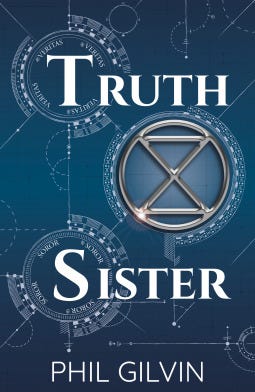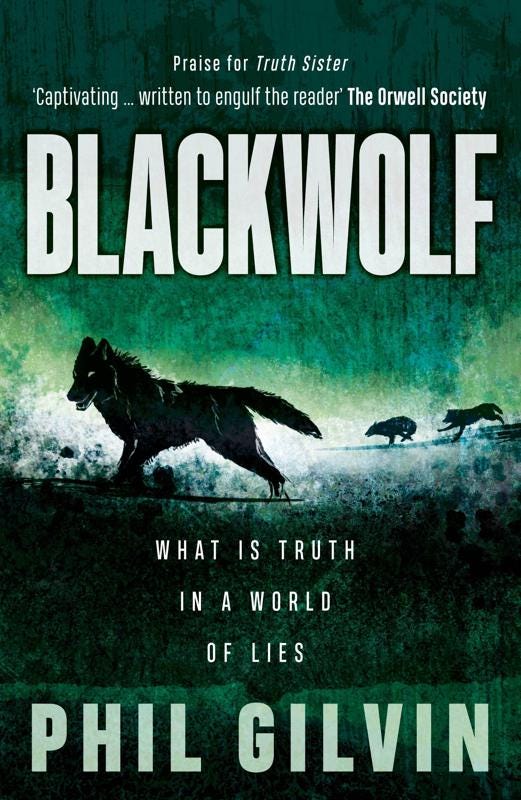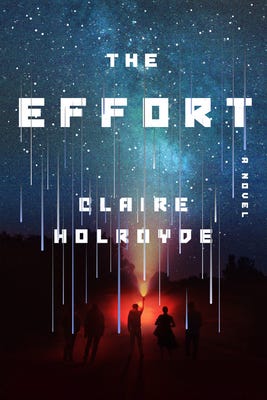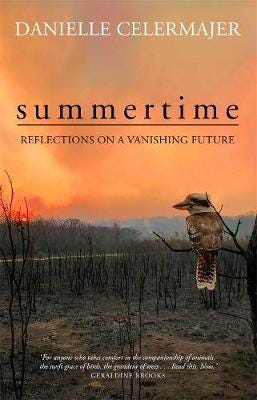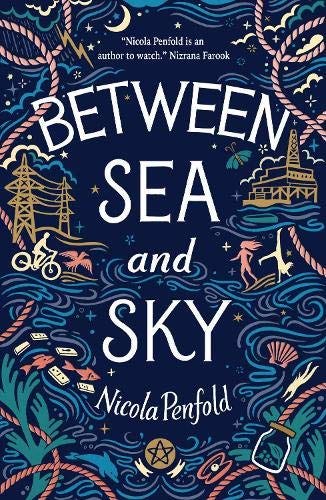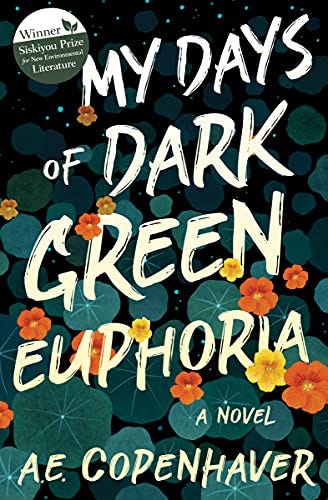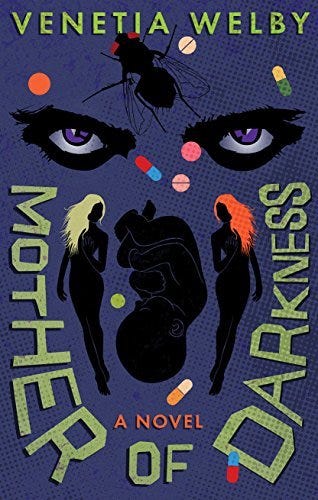I spent the spring of 2019 at an Institute for Advanced Study in Germany. One evening, in the midst of a conversation about the climate crisis, I asked another Fellow—a methane expert, methane being an even more potent greenhouse gas than carbon—what he feared most about the future. Crispr, he said, and a global pandemic. His words haunt me now. Some months ago, I wrote the essay below, about the challenges of representing our current reality in fiction, a reality that includes the climate crisis, our habits of denial, and our comforting belief in a future that resembles the past. Now the world has swerved. Swerves make good fiction, but they can be shocking to live through. The COVID-19 pandemic changes the lens through which we view the climate crisis and the breakdown of the planet’s ecosystems but it doesn’t make these phenomena go away. Mere weeks ago millions of hectares of Australia were burning. We add the pandemic—its viral deaths, our shutdown and disrupted lives, and its proof of the possibility of rapid social change in response to a crisis—to the seams of our world as we speculate about what is to come.
—Catherine Bush, March 31, 2020
Scene 1: Several years ago I was invited by a high-end adventure travel company on an expedition to Sable Island, the thin, ecologically delicate sandbar off the coast of Nova Scotia famous for its population of wild horses and history of shipwrecks. The island had just been turned into a national park. Wondrous as its landscapes were, it was also impossible to miss the oil platforms hovering mistily at the horizon. Over an elaborate lunch in the ship dining room, I described to my tablemates my novel-in-progress, which features an Arctic glaciologist grappling with the ecological wreckage of the world as both a climate scientist and parent, only to be met with the defensive posture of someone with ties to the oil and gas industry: the climate may be changing, but there’s no proof that humans have caused the changes.
*
Scene 2: A couple of years later, I found myself, one March afternoon, in a cabin on the far eastern reaches of Fogo Island, a forty-five-minute ferry ride off the coast of Newfoundland, itself an overnight ferry ride from mainland Canada. Outside, slabs of snow-covered granite, interrupted by stands of spindly and windswept tuckamore, spread to the white and ice-choked North Atlantic. I’d skidooed in to the cabin with two brothers from the community of Tilting, and as we sat there drinking instant coffee by the heat of the woodstove in this utterly remote place, it struck me that in my years of conversation with people on Fogo Island about the weather, people who live intimately connected to land and sea and air, I had yet to meet anyone who denied the existence of human-caused climate change. Nevertheless, many of the new houses in the village of Tilting have been built with money made in the oil sands.
*
By now most if not all of us will have contended with amplified and more frequent hurricanes, weather fronts shifting with winds so strong they topple trees, so-called hundred-year storms and floods, droughts that keep recurring, perilous proximity to wild fires. Likely all of you reading this accept the science of the climate crisis: that human activity, specifically our burning of fossil fuels and spewing of greenhouse gases into the air, is a driver of atmospheric warming, which in the short term amplifies weather unpredictability and in the long term threatens ecological catastrophe, potentially bringing about our extinction as a species.
Despite the dire warnings about the radical need to change our behaviour, we mostly go on living in a kind of functional denial of this climate knowledge. We fly, we drive, we cool our over-heated houses with air-conditioning powered by fossil fuels, vote for political parties that support the oil and gas industries, and console ourselves with illusions of continuity. I’m not innocent. I fly less than many people and I obstreperously ask people if they can imagine not flying at all. (I’ve met one person, an environmental lawyer, who has managed this for many years.) But I drive regularly between city and country. I navigate my own seams of contradiction, even hypocrisy. Nevertheless, as a writer, I no longer feel capable of making art that fails to acknowledge the climate crisis and the existential condition in which we all live.
For six years I’ve been working on a novel that attempts to bring climate science and the climate crisis into a work of literary fiction alongside some of our existential habits of denial. I’m provoked by the question of what literary realism looks like at this moment, in the places I write from on this planet. How do I create a literature that feels real when so many aspects of the lives around me are premised on the most profound fictions: that we can continue to live as we do, those of us lucky enough to be able to privilege our short-term comforts and desires, indulging in the luxury of global mobility and the individual benefits of ideologies of growth and extractivism, while ignoring the profoundly destructive consequences of our behaviour, particularly for those who come after us? What does the project of literary realism, which for the last couple of centuries in the industrialized and capitalist West has largely focused on the interactions of individual human psyches within their social milieu, look like going forward? How do we represent our current reality imaginatively, and, if we’re going to grapple directly with the climate crisis in a literary work, how can we do so artfully rather than swinging about with an apocalyptic sledgehammer?
I’m drawn to thinking about my own first novel, Minus Time, published twenty-six years ago in 1993. It’s narrated by Helen Urie, a young Canadian woman struggling to come to terms with an ecologically fragile world and with an astronaut mother attempting to set a record for orbital space habitation. The novel grew out of the collision between my childhood love of the Apollo space missions and my lifelong feeling of interconnection with the rest of the living world. Even as a child, the Christian idea of human “dominion,” aka our exceptionalism, made no sense to me. While her mother circles the planet, Helen’s fascination with a group of animal-rights activists heightens and she gets pulled into their increasingly large-scale protests as nonviolent eco-warriors.
When I wrote the novel in my twenties, I saw it emphatically as a work of realism, even as my intentions were to break through the borders of a normative domestic realism that to my mind never felt real enough. Yet when I mentioned that there was an astronaut in the novel, people often asked me if I were writing science fiction, as if I’d somehow veered into the speculative even though astronauts, including female astronauts, were as real in the 1990s as they are today—one being Canadian neurologist Roberta Bondar, who flew on an American space shuttle mission in 1992. Animal-rights activists and slaughterhouses were also just as real then as now, and I wanted to embed them in a work of realist literary fiction, to expand the map of the imaginary by making animal-rights activists and female astronauts as real on the page as they were actually real.
*
A few years ago it was a commonplace to lament the dearth of writers and artists responding to the climate and biospheric crises in their work. This is changing. But the challenge of how to do so remains and, like the changes to the weather itself, only grows more amplified.
The climate crisis is both real and hyper-real, so existentially enormous it’s virtually impossible to imagine. In fact, we have no idea what’s coming. We have scientific probabilities as a prognosticator of looming social collapse brought on by increasing weather extremes and food and water insecurity. Yet we can only ever imagine a future based on the past, and the past becomes less a guide all the time to what lies ahead.
While the conversation about the climate crisis seems to be gaining momentum as the timeline for meaningful societal change shortens, most people still don’t want to think very much about these matters because the subject is so overwhelmingly depressing. And terrifying. This makes it hard to figure out how to give climate issues an imaginative form other than as a disaster narrative that still risks being overwhelmed by the narrative arc of reality. On the one hand, nothing seems to be changing at all, so much human activity all around me continuing to ignore impacts known for decades; on the other hand, as the pace of climate disaster accelerates, the cultural conversation does seem to be shifting—witness the rise of Extinction Rebellion as a global movement and the strikes led by youth activist Greta Thunberg. How can fiction that isn’t written at breakneck speed capture something of these contradictory realities, too?
Here’s another problem: paradoxically, the more we talk about our actual predicament, the harder it becomes to represent it imaginatively. Through repetition, the climate crisis risks becoming a cliché on the page, overburdened with overwhelming, unchanging significance—even as it simultaneously exists as an uncanny, unaddressed presence, or present absence, in many lives.
All fiction written now is climate fiction, I would argue. More usually the term refers to a genre of fiction that addresses the climate crisis directly, often within the broader genre of speculative fiction, but this compartmentalization enacts its own denials. All writers today write in relation to the climate and ecological crises, our planetary emergency, whether these things are acknowledged or not. Because this existential condition is at the core of our current reality, it infects all attempts at artistic realism. Literature is an art of navigating between presences and absences, making the usually unseen visible and reversing disappearances large and small. Yet writers also leave traces of unacknowledged absences for others to notice. Whether or not it is on the page, the climate crisis imparts meaning: its presence or absence denotes something.
In her article “Climate Change and the Struggle for Genre,” which appears in a 2017 anthology, Anthropocene Reading (Penn State University Press), American academic Stephanie Lemenager writes:
The question of what it means to be human in this ecological moment and how to narrate the problem of ‘being human’ lies at the center of Anthropocene thinking.
The term Anthropocene may be a contested one. In geological terms our impact may remain small over timespans of billions of years, but Lemenager’s words can serve as a useful guide for thinking about contemporary literary realism.
*
William Shakespeare’s play The Tempest, first performed in 1611, opens with a stage-wracking storm. In his essay “Enter Anthropocene, 1610,” American professor Steve Mentz notes that Europeans rarely encountered hurricanes before the early-modern period. Following the argument of geographers Lewis and Maslin, Mentz proposes the early-seventeenth century as the beginning of this new geological epoch, one defined by a human presence powerful enough to leave a mark on the geological record, with rising global trade and colonialism as its initial drivers. Hurricanes are a New World weather phenomenon. As European navigators struggled to contend with them, Shakespeare sends one onto the stage. Audiences of the time would have seen not just a terrifying storm but something larger: unfamiliar, symbolic, epochal.
The novel I’m working on, set in an approximate now, opens with a Category Five hurricane that has churned up the east coast of North America, leaving devastation in its wake. Tugged by warming ocean water, it swerves farther north than expected, side-swiping the small island where the novel is set. Every hurricane we encounter now, in life and on the page, becomes larger than itself, literally and metaphorically, by simultaneously embodying the climatic forces that humans have unleashed, leading to new forms of chaos. In the words of American writer Roy Scranton, author of Learning to Die in the Anthropocene (2015), “We live in the gap between the wind and the whirlwind.”
*
In 2006, I saw a production of The Tempest by the Royal Shakespeare Company, featuring Patrick Stewart of Star Trek fame as the magician Prospero. Deposed from his dukedom, Prospero ends up fleeing to an isolated island with his young daughter, where he seizes control of this world and all its elements. He commands the wind and waves. As the play opens, he conjures a huge storm to entrap the enemies he’s lured to the island. Often Prospero is played as an aging sorcerer. By contrast, Stewart was a virile and forceful presence, hunter and autocrat, still angry as the play ends at being compelled to relinquish his power. The production was set in the bleached world of the high Arctic, which is in fact a world of islands.
Many artists, historical and contemporary, have reworked The Tempest to their own purposes. The play has offered strong fodder for post-colonial retellings, such as Martinique writer Aimé Césaire’s 1969 play Une Tempête, which shifts focus to the subaltern characters, particularly Caliban, the island native enslaved by Prospero. In Julie Taymor’s film version, Prospero becomes a woman, Prospera, played by Helen Mirren. The play has also been written about in eco-critical terms, which I didn’t know when I began to think about Prospero, the weather changer, as a kind of proto-twenty-first-century human, man of the Anthropocene, who, in my novel, shapeshifts into a climate scientist.
Shakespeare’s Prospero, too absorbed in his books and study, is accused of witchcraft and deposed by his conniving brother. My scientist, Milan Wells, a glaciologist engaged in studying ice cores extracted from northern glaciers, is set upon by climate-change deniers in a scenario that loosely follows the contours of what happened to actual scientists in 2009, in the series of events dubbed Climategate, just before the COP15 conference in Copenhagen. A server at the University of East Anglia’s Climate Research Unit was hacked, and email correspondence, released by deniers, was framed in such a way as to alter sense. UEA scientists and others, including American Michael Mann, were accused of fudging data to show warming; they were guilty, deniers claimed, of perpetuating a hoax. The events received massive mainstream press; the scientists in question, while ultimately vindicated, faced enormous short-term pressure.
My scientist, his realistic career in tatters, flees to a fictional version of Fogo Island. Here, in the North Atlantic, he discovers real subarctic flora on the island’s ocean side. Every spring and summer, icebergs, pulled south from the Arctic Ocean by the Labrador current, float past: huge, sepulchral monuments to a vanishing world. While he comes seeking refuge, determined to leave the rest of the damaged world behind, he also arrives at a place where he becomes a fictional frontline witness to actual environmental disruption.
“I have done nothing but in care of thee,” Prospero says passionately to his daughter Miranda. How does an Anthropocene parent, a climate scientist no less, best care for his child? His knowledge of our predicament is a burden he cannot escape. This is Milan Wells’ quandary. The novel is narrated by the recipients of his troubled and sometimes troubling care: his daughter, Miranda, and the young local man, Caleb Borders, once almost a son, whom he employs. In the novel’s present, both Miranda and Caleb are engaged in trying to discover what Milan Wells is up to. Is he actually monitoring the weather, as he claims, or something else? What is the nature of the mysterious field experiments that he has conducted and in which Caleb has been an unwitting assistant? Why has Milan Wells brought three younger scientists to the island, and later three more disturbing visitors: a flamboyant airline magnate, the magnate’s financier brother, and an economist who doubles as a “famous” climate-change denier?
*
When father and daughter first arrive on Blaze Island, driving off the ferry into thick fog, Milan, intent on hiding his past as a climate scientist, elicits a promise from her: they are never to mention the word climate to each other or anyone else. I can’t claim this as an entirely original literary gesture. In 2014, American writer Nathaniel Rich published Odds Against Tomorrow, a novel in which a disaster climate modeller working for corporations confronts a New York swamped by a huge hurricane eerily similar to Hurricane Sandy, which went howling through Manhattan just as Rich was proofreading his novel. In the book Rich refuses ever to mention the words “climate change.” As he explained in a 2013 NPR interview:
I think the language around climate change is horribly bankrupt and, for the most part [is full of] examples of bad writing, really. Climate change as a phrase is cliché. Global warming is a cliché.
I decided to create a more active void, characters who refuse to speak the words “climate change” while the weather changes around them accumulate.
When I began work on the novel, I had a conversation with the director of Cape Farewell, a cultural organization that has brought writers and artists, including Ian McEwan, author of the climate-fiction novel Solar, on boat trips to the Arctic to confront the realities of climate change in that landscape. I told him that I intended to have my scientist contemplate climate engineering—intentional tampering with the atmosphere in order to counter anthropogenic warming. He told me I shouldn’t write about climate engineering because this seductive and perhaps impossible detour from the real work of getting humans off carbon was ethically bankrupt. A dangerous fantasy. In life, I have profound moral questions about extreme forms of climate engineering. Perhaps we’ll figure out ways to capture carbon. Biological carbon sinks may make sense, but injecting particles into the upper atmosphere to create a haze that reflects back solar rays in order to mitigate warming fills me with horror. Yet such plans are indeed being investigated by real scientists such as Canadian David Keith, now at Harvard. This seemed all the more reason to write about these things as a phenomenon for fictional humans to wrestle with. In fact, it felt like a necessary form of realism.
Imagine you are a climate scientist with a child; your research, gathered from Arctic ice cores, offers evidence of ongoing warming trends; you publish your data; you breach expected scientific objectivity to offer public warnings about the risks of rising C02 levels. When you are accused of data fraud, and abandon academia, you create a new life close to nature, teaching your child an intimate attention to the natural world and practical survival skills, which may be the best schooling you can offer her for what lies ahead. Still, atmospheric carbon levels keep going up and Arctic ice keeps melting. Can climate engineering, in such conditions of extremity, be conceptually entertained as a form of parental care by a parent determined to do everything possible to protect his child from the worst of possible futures?
Fiction doesn’t need to answer this question, only pose it, and a novel poses questions by embodying them in urgently imagined bodies and consciousnesses, set in motion to con- front the world through brain and gut, amid a matrix of emotion and sensation and memory. Fiction creates possible worlds and lives in their vivid particulars: this is the core of its realism. It gives body and voice to incompatible truths, to contradictions and self-contradictions. It creates experiential complexity. This is at the core of its art. Paradoxically, through little black marks on a page, fiction offers, in the words of Scottish dance artist Paul Michael Henry, “an embodied response to the situation,” the situation being our predicament at this moment of ecological unravelling.
I remember being at the Climate Engineering Conference in Berlin in 2014, a conference notable for its intense interdisciplinarity, so many singular intelligences fixed on the problem of how to address rising emissions and climatic disruptions. The conference rooms were also filled with fear. One night, as we gathered in the city’s Museum of Natural History surrounded by the skeletons of dinosaurs, I listened to an American diplomat who’d worked for the Clinton administration give voice to his terror. At an afternoon session, a researcher from the South Pacific grew furious at northerners for ignoring the extreme risks faced by those in the global south. Objectivity has its place, but it is only one way of knowing, one particular way of exercising brain and body in relation to the world around us. It has its own self-confirmation biases. “Science,” says American ecological theorist Donna Haraway, “is a set of situated practices.”
In a 2018 New York Times Magazine feature, French philosopher Bruno LaTour argues that the idea that we can stand back and behold nature at a distance, as something discrete from our actions, is an illusion. As he described flying over the fissured ice sheets of Baffin Island on his way to give a talk in Calgary about obsolete notions of nature, he told an audience,
My activity in this plane going to Canada was actually having an effect on the very spectacle of nature that I was seeing. In that sense, there is no outside anymore.
There never has been, a knowledge that indigenous cultures in particular have sustained while Western thought insisted on human superiority and that the rest of the world was mere material for our use.
Other ways of knowing enmesh us with our own subjectivities and reveal our porousness to a world that we are never separate from. A novel is one such mode of thought, a way of querying scientific “objectivity” while inviting us into that porousness.
*
In choosing to narrate my novel from the perspective of two younger characters, I wanted to acknowledge the limits of my own expertise and to view climate science through the experiential lens of those who are not scientists, as most of us are not. I also wanted to embody less obvious forms of climate denial—that of a young woman strenuously protected by a knowledgeable parent, a scientist whose fears seep out no matter how he tries to hide them. How does she come to her own knowing of a changed and changing world, knowledge that she can inhabit, that is not wholly shaped by her father’s terror, that offers her agency and a way to look forward? The human response to the anthropogenic climate crisis is often an intergenerational struggle, one in which, as Greta Thunberg has declared, adults often behave like children and children are compelled to hold the adults in power to account.
“Climate change, as many have observed, appears to detach atmospheric knowledge from atmospheric sensation,” writes literary scholar Thomas H. Ford. “Climate is global, a statistical construction of highly abstract and mediated modes of knowledge. Whatever the weather around you at any given moment, it is never climate, let alone climate change.” Yet we can and do experience change, and we experience it constantly, incrementally, disruptively, sometimes even cataclysmically. My character Miranda Wells, alert to every shift of wind direction, senses the changes that adolescence brings to her body even as she notices the new birds arriving on the island: the grosbeaks, the goldfinches, the flocks of robins. She lives through worsening storms. She encounters melting icebergs, broken off the Greenland ice sheet, whose fragments she and others gather along the shore and put in their drinks, dissolving ancient ice and air into their own bodies, as I myself have done.
We hunger for stories because by their nature they embody principles of transformation. They are temporal beings, as humans are. In a story, something changes. In older forms of poetry, a rhyme is not a word that repeats over and over but similar words that enact change even as they recall each other, scoring grooves in our memory. Confronting change in its deepest form means facing our own mortality, since for us change inevitably leads to loss and death.
But experiences of change also connect us to everything else on this planet: life forms, weather system, earth system, oceans. Even mountains weather. A novel can be a zone for activating these webs of connection, inviting us to leap not only into other humans but beyond—into caribou and hawk and lichen, into wind and cloud and ice and sea and air. To become other, become nature. A novel shifts our attention, seriously and playfully. It offers its own modes of concentration, bringing order and unpredictability together. In its very form it opens us to transformation—taking us out of a realm of endless traumatic repetition and offering up the slim, temporary yet nevertheless real possibility of accessing other ways of being.
This essay was originally featured in Canadian Notes & Queries. Find out more about Blaze Island.
Catherine Bush is the author of five novels, including Blaze Island (2020), a Globe & Mail Best Book, and The Rules of Engagement (2000), a New York Times Notable Book and a Globe & Mail and L.A. Times Best Book of the Year. Her books have been shortlisted for the Trillium and City of Toronto Book Awards in Canada. She was a 2019 Fiction Meets Science Fellow at the HWK in Germany and has written and spoken internationally about responding to the climate crisis through fiction. She is the Coordinator of the University of Guelph Creative Writing MFA, located in Toronto.


